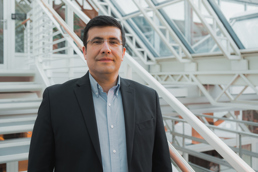Heroes on the edge of burnout
KNOWLEDGE @ KRISTIANIA: Health Sciences
People’s lives have been turned upside down around the world after the COVID-19 virus was spotted in China in December 2019. Health professionals are at the head of the professional groups that serve in these days by trying to maintain their own quality of life and stay healthy.
- Podcast featuring Adnan Kisa: Take-Home Lessons from the Corona Crisis
The “hero role” given to health professionals also places a separate burden on health professionals. Because the “heroic role” of health workers is to hide the real problems that arise because of the pandemic.
In addition, many health professionals face ‘moral injuries’ when deciding which patient with COVID-19 should receive a life-saving therapy that is in short supply, at the expense of another dying patient (Greenberg et al., 2020).
- Read also: The Rise of the Counterfeit Industry
Health of healthcare professionals
During the COVID-19 outbreak, many healthcare workers, as well as their families and relatives, were affected, lost their lives and continue to be affected.
Healthcare workers work longer than normal, live away from family members for fear of contagion, are stigmatized because they can infect others, and are exposed to more physical and psychological violence in emergency departments and intensive care units.
- Read also: Korona smitter ikke gjennom kultur (in Norwegian)
For this reason, all responsible institutions should make more efforts to protect and maintain the physical and mental health of healthcare professionals.
Healthcare professionals have begun to express the pressure they experienced during this period, their fears about the risk of contracting the disease, their worries about insufficient protection methods, their overcapacity, their disappointment, their encounter with the problem of discrimination too much, their isolation, the increase in their patients’ negative emotions, staying away from their families and their burnout.
Effects of COVID-19 related burnout
The individual, organizational, and social effects of burnout among health professionals due to COVID-19 have become clear. Symptoms of COVID-19 related burnout in the way of psycho-physiological, psychological, and behavioral were observed in health professionals on the individual level.
The most commonly reported psycho-physiological symptoms were tiredness, gastro-intestinal disorders and weight loss, coronary heart disease, breathing difficulties, and general pains (Wu et al., 2020).
Psychological symptoms included emotional exhaustion, quick temper, being suspicious and anxious, irritability, helplessness, easy crying, decreased self-esteem and self-confidence, difficulty in concentration, apathy towards patients and depression (Kisa, 2020).
Reported behavioral burnout symptoms were physical and psychological distancing from patients, making similar mistakes, postponing work, deterioration in the nature of the service offered, deterioration in relationships at work and outside work, decrease in job performance, job dissatisfaction, conflict with family members and friends, increase use of drug, alcohol, and smoking (Hu et al., 2020: Kisa, 2020).
Symptoms reported on the organizational level included a decrease in health service performance, negative job attitudes, an increase in the number of staff considering quitting, and increased service delivery costs (Hoffmeyer et al., 2020).
- Read also: The Rise of Generation Co
Individual and organizational level interventions
To reduce the effects of COVID-19 in many countries, counseling, and psychotherapy services have started to be provided to health professionals by establishing counseling teams.
In some countries, peer support activities, regular meeting times with health professionals, and psychiatric consultation helplines have been established to address the mental health problems of health professionals facing overwork, stress, difficult ethical decisions, and multiple deaths (Greenberg et al., 2020; Kisa, 2020).
Intervention strategies for institutional factors should focus on social support, increasing participation in decision-making processes and improving communication with the administrative team (Greenberg et al., 2020).
Some institutional strategies are suggested for health system leaders and managers to promote engagement of the health professionals and reduce burnouts:
- acknowledging and assessing the problems related to COVID-19,
- harnessing the power of effective leadership,
- developing and implementing targeted interventions,
- cultivating community at work,
- using rewards and incentives wisely,
- aligning values and strengthen culture,
- promoting flexibility and work-life integration,
- providing resources to promote resilience and self-care, and
- facilitating and funding organizational science (Hofmeyer et al., 2020).
Questions still pending in the process COVID-19
This epidemic has led many questions to debate to be answered.
- How can we close the health professional gap caused by early retirement, illness or death?
- If there is no progress in the discovery of new vaccines and treatment methods of the disease, how will health systems provide complete and sustainable treatment to those infected?
- How can the equipment and other materials used to fight the virus reach so quickly that it does not threaten the lives of many people?
- What types of communication strategies should be used to keep the public’s participation in the fight against the virus at a high level?
- What should be the way to respond to such crises in a timely and effective manner?
- Are the leaders of countries struggling enough with the under-reporting problem?
All these questions should be answered in a short time while at the same time the factors that cause burnout problems of health professionals should be eliminated quickly.
Countries may have high-tech health institutions, but it is health professionals who use this high technology and keep the health system afloat.
References:
- Greenberg, N., Docherty, M., Gnanapragasam, S., & Wessely, S. (2020). Managing mental health challenges faced by healthcare workers during COVID-19 pandemic. BMJ, m1211. https://doi.org/10.1136/bmj.m1211
- Hofmeyer, A., Taylor, R. and Kennedy, K. (2020). Fostering compassion and reducing burnout: How can health system leaders respond in the COVID-19 pandemic and beyond? Nurse Education Today, 104502. https://doi.org/10.1016/j.nedt.2020.104502
- Wu, Y., Wang, J., Luo, C., Hu, S., Lin, X., Anderson, A. E., Bruera, E., Yang, X., Wei, S. and Qian, Y. (2020). A comparison of burnout frequency among oncology physicians and nurses working on the frontline and usual wards during the COVID-19 epidemic in Wuhan, China. Journal of Pain and Symptom Management, 60(1), e60-e65. https://doi.org/10.1016/j.jpainsymman.2020.04.008
- Kisa, S. (2020). Burnout among Physicians and Nurses during COVID-19 Pandemic. European Journal of Environment and Public Health. Volume 4 Issue 2, Article No: em0055. https://doi.org/10.29333/ejeph/8447
- Kisa, S. and Kisa, A. (2020). Under-reporting of COVID-19 cases in Turkey. [published online ahead of print, 2020 Aug 3] International Journal of Health Planning and Management. https://doi.org/10.1002/hpm.3031
This popular article is first published in Kunnskap Kristiania 2020/2021. Kunnskap Kristiania is a science Communication Magazine published by Kristiania University College.
Text: Professor Adnan Kisa, School of Health Sciences at Kristiania University College.

